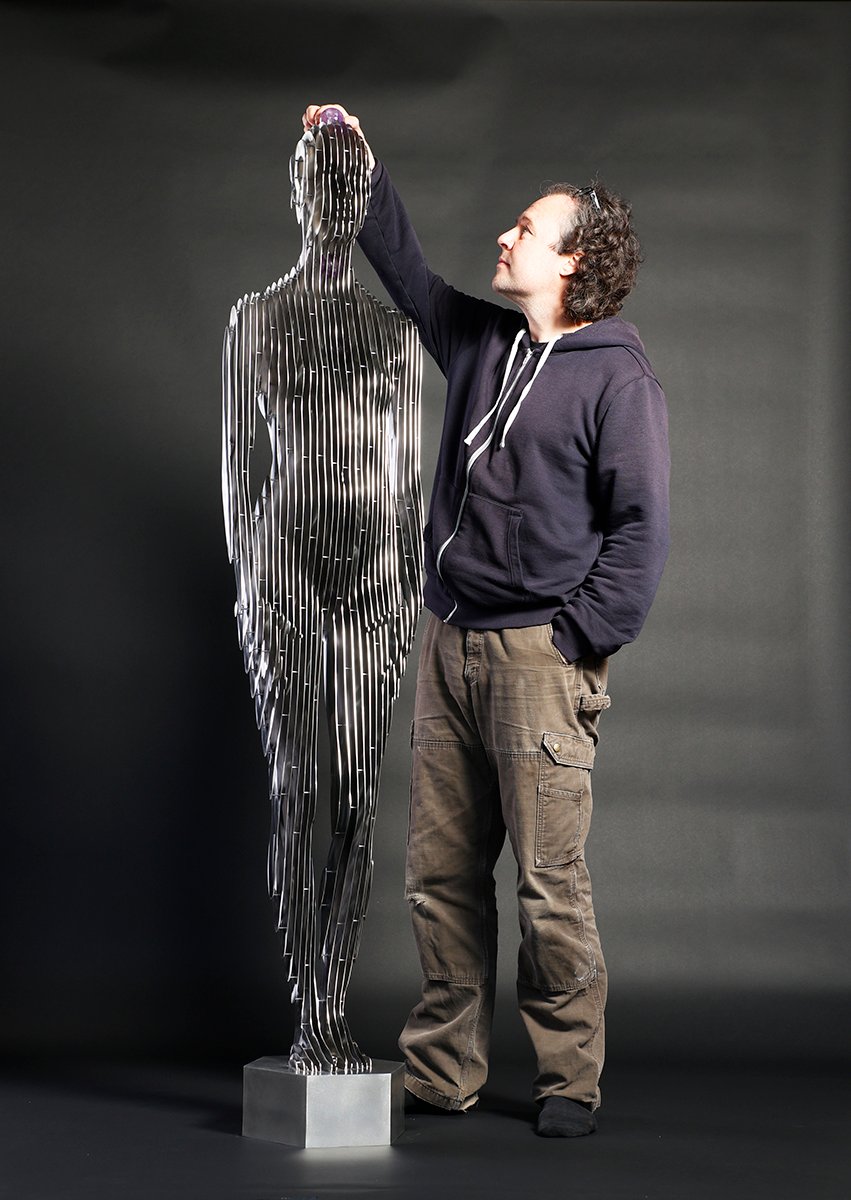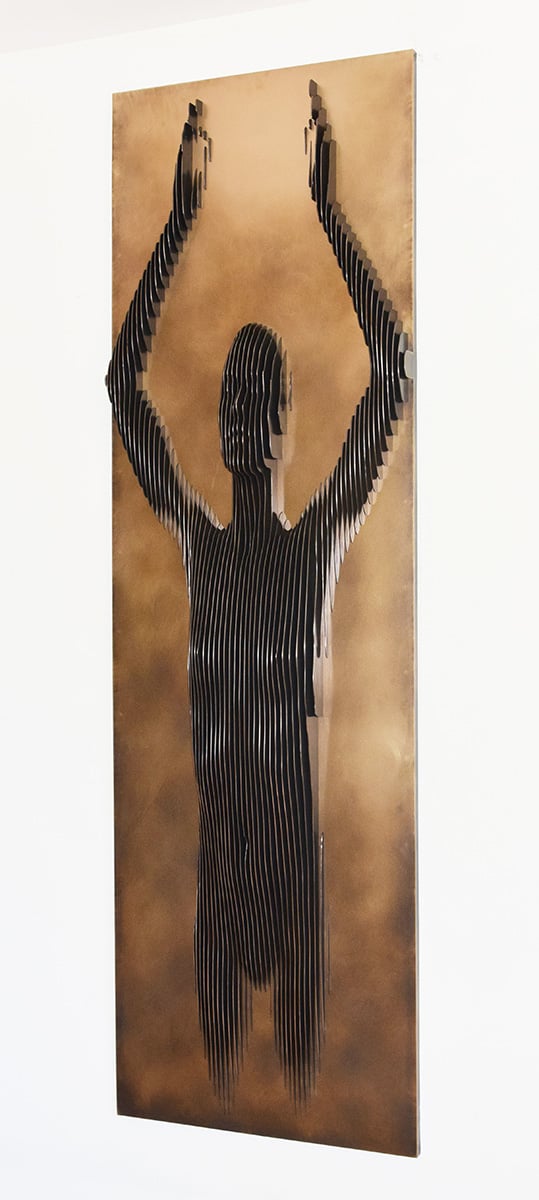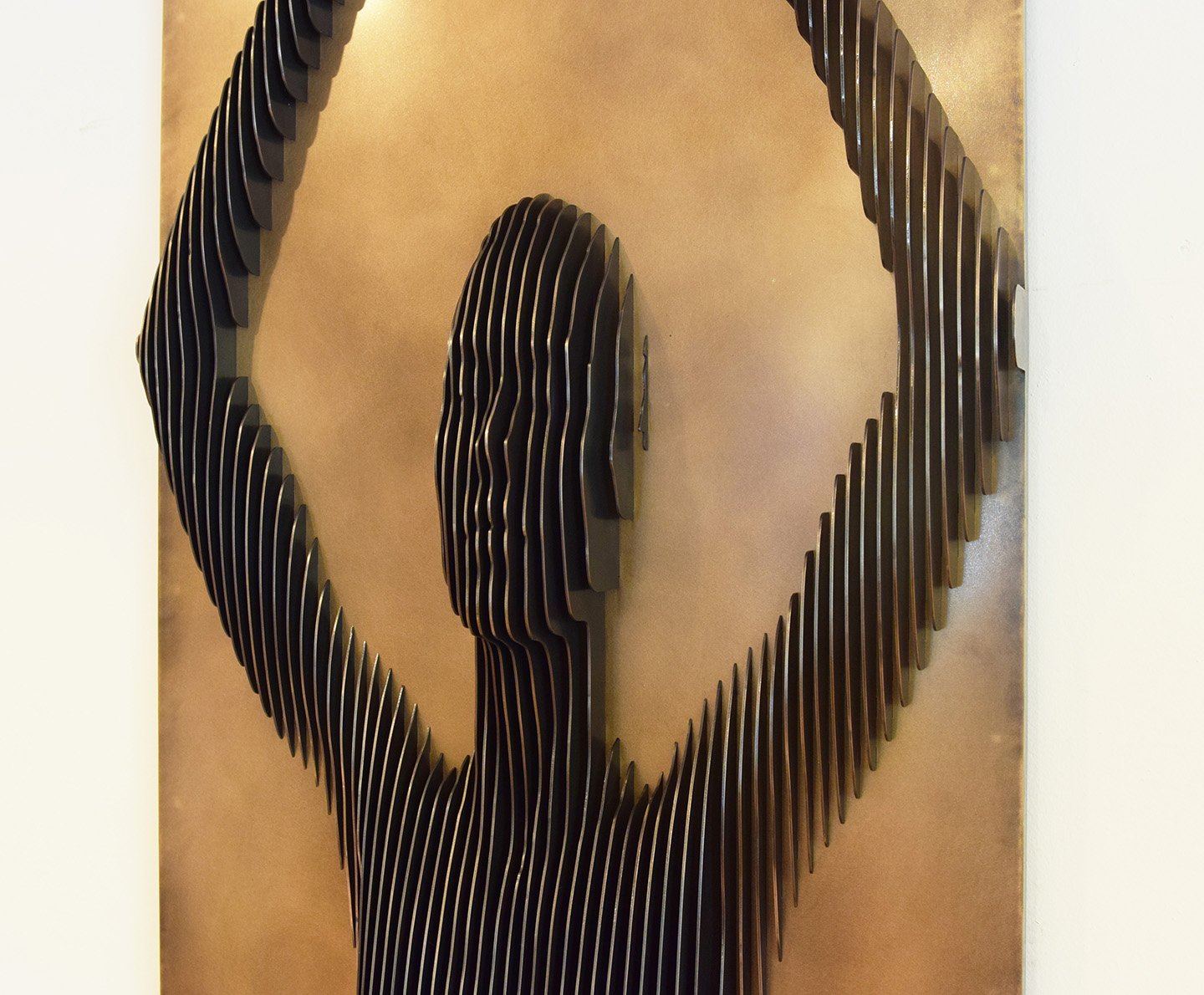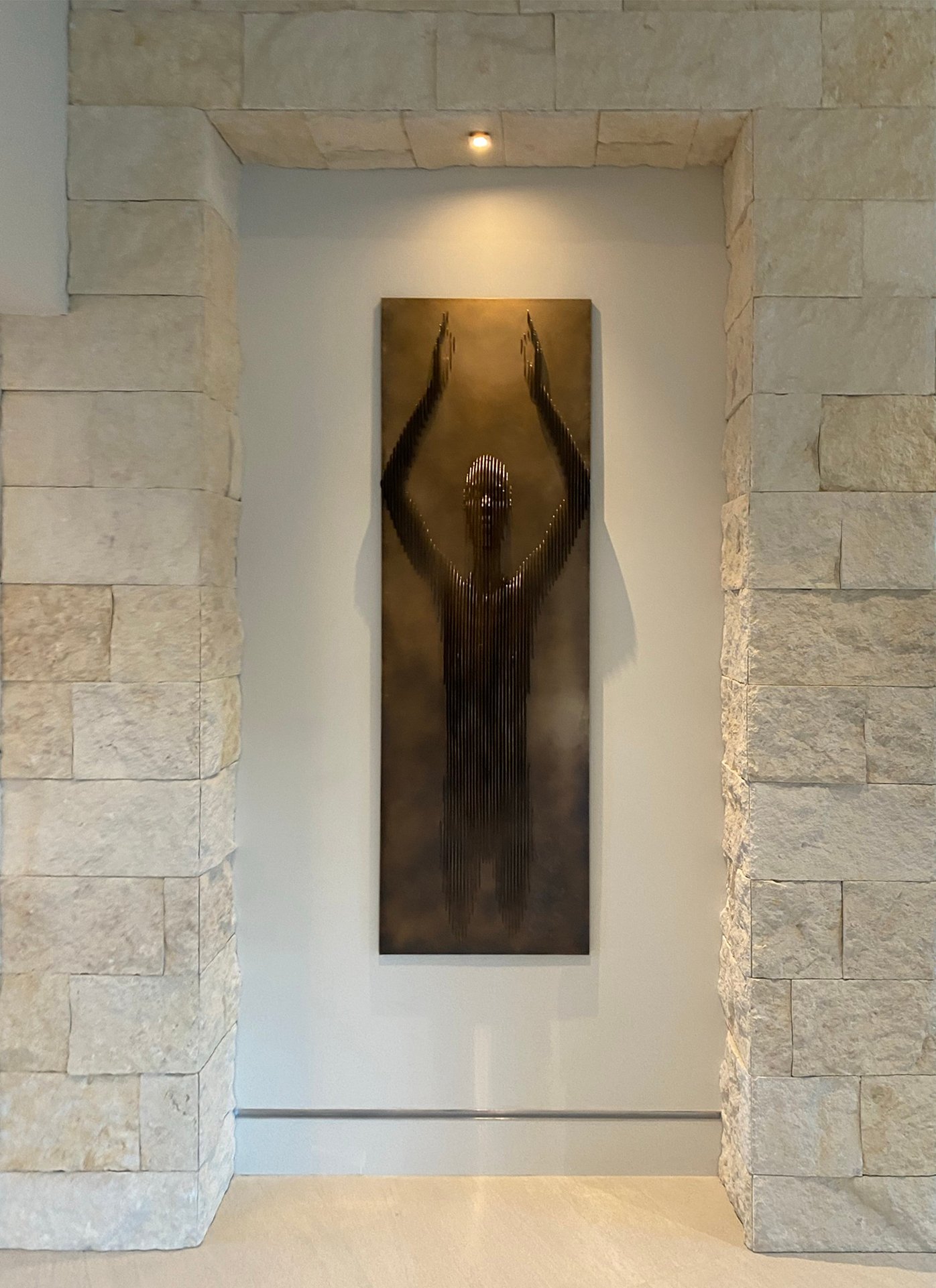
Nanette
Bronze with Patina, Stainless Steel, 2020
77" x 24" x 4"
Unique Original
Sold Out
I'm Interested!Availability and Pricing
Please fill out the form below and we will send you an up-to-date pricelist with availability.
Julian Voss-Andreae
Many artists have been inspired by Quantum Physics, but very few can claim to be Quantum Physicists. Julian Voss-Andreae was born into an artistic family with a profound love of, and appreciation for, the fine arts. His mother is a violinist, and his father wrote, produced and directed a feature-length documentary about a renowned artist back in their native Hamburg, Germany. Both parents were very supportive of Julian’s early artistic pursuits and talent in drawing and painting. However, his deep curiosity and desire to explore the underlying nature of reality, gravitated him toward Quantum Physics, first at the Freie University Berlin and the University of Edinburgh, and later at the University of Vienna, where he did his graduate work in the research group of Anton Zeilinger (recipient of the 2022 Nobel Prize in Physics).
The seminal experiment Voss-Andreae participated in is now commonly featured in physics textbooks. His team was able to illustrate how the famously bizarre world of quantum physics underlies the familiar world as we experience it by demonstrating quantum behavior for the then largest particles ever, soccer ball-shaped molecules affectionately known as “buckyballs.” These studies would later deeply influence his art in multifaceted ways.
It was also through science that he met his wife, Adriana, who was a graduate student in neuroscience at the time, and who has since collaborated with him on several sculpture projects. In 2001, he moved to the US and went on to get his BFA in sculpture at the Pacific Northwest College of Art in Portland, Oregon, where his studio is based to this day. He received his first public commissions while still an art student, and was discovered by galleries soon after. Today, private collectors often have to be waitlisted to receive one of Voss-Andreae’s sought-after sculptures. His sculptures have found their way into hundreds of private and public collections in the Americas, Europe, Africa, Australia, and New Zealand. His works have also been published in the press internationally with high critical acclaim, videos of his work have gone viral with tens of millions of views, and he has received numerous prizes and awards.
While Voss-Andreae’s sculptures are inspired by a diversity of fascinating concepts and themes, his “disappearing” sculptures strike a particularly deep chord. They were conceived when Voss-Andreae imagined himself in the place of the buckyball particle of his graduate research. Just like the internal oscillatory energy of the particle, first described by Planck and Einstein, gives rise to the wave function of quantum physics, he envisioned the rhythmic motion of the human gait giving rise to the same mathematical structure. Visualizing the wave fronts of the wave function as evenly spaced, parallel slabs of steel, the idea for his “light wave beings”, or “disappearing sculptures,” was born. Built in slices of marine grade stainless steel, the most industrial and cold material in art, Voss-Andreae depicts the soft and warm human form in a way that, depending on the viewer’s perspective, appears solid or virtually disappears. Through his art, Voss-Andreae succeeds in metaphorically transcending the classical reductionist-materialist paradigm to reveal the underlying nature of reality as holistic and deeply spiritual.






